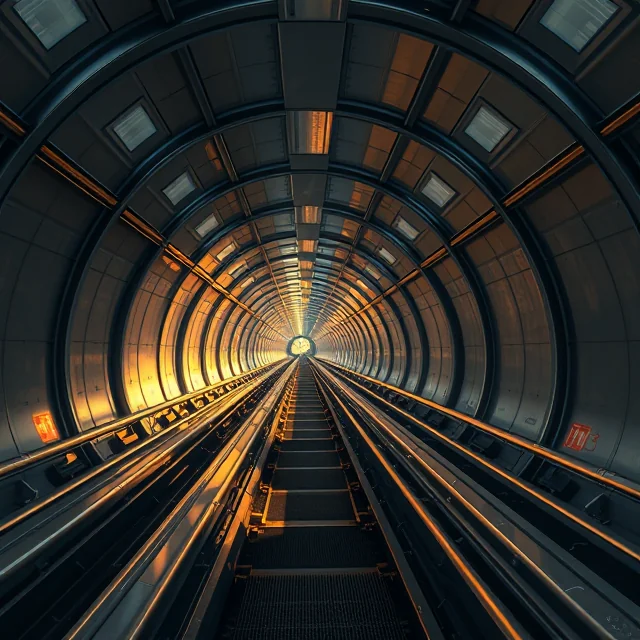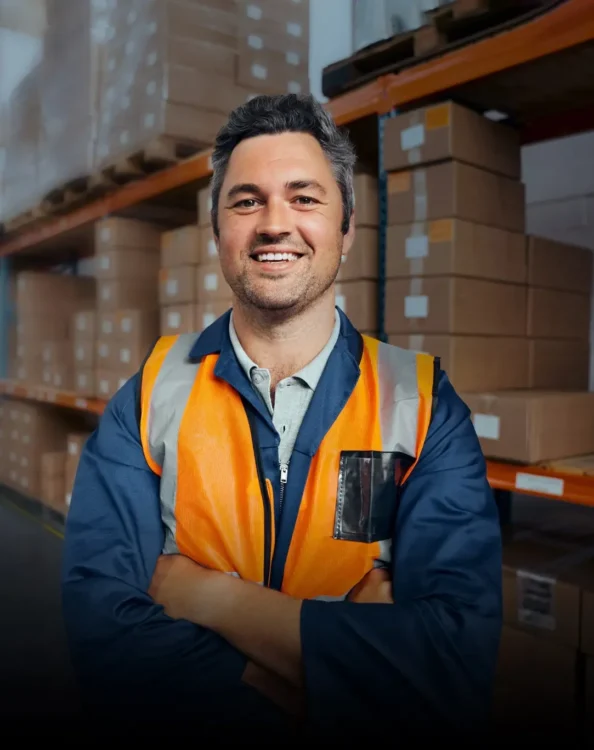Imagine a mode of transportation that is faster than a bullet train, carrying people and cargo at near the speed of sound. The logistics industry is already envisioning this transportation: the Hyperloop. This theoretical loop would connect significant hubs around the country, allowing travel from Chicago to Los Angeles in less than three hours.
When completed, the Hyperloop will be an incredible technological feat and something logistics professionals are certainly looking forward to, but how far along in the process is the industry? How close are we to this extraordinary machine? And when completed, how will hyperloop logistics affect the freight landscape?
The idea of near-sonic speed ground transportation has been around for over a century. It wasn’t until 2013, however, that the term “vactrain” appeared and was quickly “rebranded” as The Hyperloop Transportation System (also called “The Hyperloop,” or, “HTS.”) This name and concept were both popularized by Elon Musk, who has since headed up a company with the specific purpose of realizing portions of the Hyperloop dream.

Hyperloop Logistics
How will this theoretical Loop work? There are a few variations in the potential design, but they all share a few specific traits. The main feature is the tunnel itself. The Hyperloop Tunnel will be vacuum sealed, allowing for zero air resistance or drag, which is a struggle cars, trains, and planes deal with daily. Using magnetic propulsion, or potentially an electric propulsion system, the tube will zoom through the tunnel with as little friction as possible. These qualities make it the fastest, least expensive (to operate), and most efficient transportation system to date.
This Hyperloop would change the freight industry, and transportation in general, the way air travel changed it over 100 years ago. Some of the changes could include:
1. Speed: There is a question that has been asked about every mode of transportation since the invention of the wheel– “But can it go faster?” With the realization of the Hyperloop, freight will be able to travel at new speeds, cutting down on delivery times and expenses.
2. Capacity: With several model types being suggested, multiple cargo tubes have been theorized. These tubes would allow for small and large freight to travel across the country, and the smooth ride would cut down significantly on wear and tear from travel.
3. Competitive Rates: The high infrastructure costs of building Hyperloop systems could make it initially expensive to implement, as it can be for any new product. Still, over time, as the technology matures and becomes more widely adopted, the cost of transporting freight through Hyperloop could drop drastically, making it the preferred and affordable option for freight transportation.
4. Security: We’ve all seen it in the movies, a big train heist, stealing the diamond from the caboose while the gang distracts the police in the passenger carriages. It makes for a great film, but it’s not so fun to deal with in real life. Between a nearly fully automated system and a vacuum-sealed tunnel, the ability to steal or otherwise tamper with freight would be enormously hindered by shipping through the Hyperloop.
5. Environmental Impact: The Hyperloop promises to be energy-efficient. Likely using clean energy or even magnetic propulsion, the carbon footprint left by the Loop would be minuscule compared to air freight or rail/ground freight.
6. Traffic: You don’t have to be a trucker, carrier, or even a broker to be excited about this one. Between getting freight trucks off the roads and being a legitimate travel alternative for many everyday drivers, the Hyperloop would leave our above-ground roads significantly emptier. This, of course, would create less traffic, and maybe we could actually get to work on time.

Here’s the bad news: while the theory of the Hyperloop concept has been proven and hailed as the fifth mode of transportation, we have a LONG way to go. Many simulations have been run, but major physical tests have yet to start. The following is a quote pulled from a publication written by the Institute of Electrical and Electronic Engineers: “According to a 2018 UK innovation report, the critical short-term research and development needs are on the propulsion, levitation, energy storage, and thermal management system. There is also a need to develop testing facilities, including the tube infrastructure design, and develop an understanding of advanced aerodynamic phenomena occurring inside the tube.”
And even after we’ve achieved these steps, we will still have massive steps to face—for example, the initial cost of building the infrastructure. Building airtight tunnels with built-in propulsion systems that cross the country is no easy feat, nor is it cheap. In fact, the cost of these tunnels is enough to potentially make the project impossible, at least in our lifetime.

After the money has been spent, our government would need to help establish regulatory laws, rules, and systems to support the Hyperloop Transportation System. This would take anywhere from a week to years to develop. Part of this process would involve integrating the Loop into currently existing systems, allowing passenger and freight offloading to above-ground systems, such as trucks, trains, and cars.
Now for the worst part: while interest in the Hyperloop System was initially massive and had investments of hundreds of millions of dollars, that interest has waned significantly in the last 4 years. In fact, Hyperloop One, one of the longest-running HTS companies, has shut down. With initial investments of over $100,000,000, they soon faced financial challenges and failed to secure a contract to build the HTS. Even Elon Musk’s Boring Company, a company dedicated to digging tunnels for the Hyperloop, has slowed but not stopped its development.
All this to say, the Hyperloop seems likely to happen, and when it does, it will forever change the landscape of freight and transportation in general. The question is, when will it truly be built?


